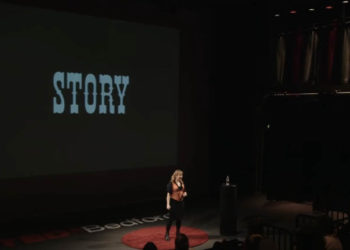In my last piece for The Scholarly Kitchen, I discussed concerns over the fate of non-profit and society publishers if federal funding agencies are mandated to implement a zero embargo on published journal articles. That article drew quite a response, including from outside the academic publishing community.
While much of the conversation around the path to openness was constructive — and indeed necessary — one aspect of it troubled me: the portrayal of scholarly societies as something that’s nice to have, but not essential to the research ecosystem. Doubts were expressed that societies should be raising revenues by publishing content that was already paid for by taxpayer monies. It was suggested that scholarly societies should just look to alternative business models to support their activities. (As if that’s a simple thing!) Why should private non-profit organizations essentially be funded by public funds?

Taken at face value, these appear to be reasonable questions. However, there is more to this story — we operate in a complex research and publishing ecosystem. In this article I attempt to disentangle the issues and paint a picture of how scholarly societies are an indelible part of the research and support system for academics across many disciplines. In this way, they resemble private, non-profit academic institutions as a vital part of the academic landscape, which similarly receive public monies in support of their role.
Perhaps we should start with some history. An interesting post from Scholastica in September 2019 interviewed Aileen Fyfe, a professor of modern history at the University of St. Andrews. Fyfe produced a fascinating briefing in 2017 entitled “Untangling Academic Publishing: A history of the relationship between commercial interests, academic prestige and the circulation of research”. Fyfe writes:
Academic cultures of prestige are derived from the voluntary, gentlemanly practices of eighteenth and nineteenth century scholars and their learned societies: as such they sit somewhat uncomfortably with post 1945 developments. The ethos of the academic research community has historically been non-commercial, and the sharing of knowledge had historically been enabled by the generosity of publishing organizations – such as learned societies and university presses – with a mission for scholarship rather than profit. But since the end of the Second World War, academic publishing has become increasingly commercialized.
According to Fyfe, commercial publishers upended the notion of wealthy individuals giving to the scholarly community as they started focusing on selling content to institutions. This was at odds with the practices of scholarly societies, which traditionally gave away much of their content to institutions. In fact, in the 1950s, scholarly societies started to realize that they could focus on goals — such as trying to break even — if they sold publications to institutions. It is not that these organizations abandoned their mission. Rather, it was recognized that publishing could provide revenues that could be put towards other vital society activities: these include efforts to promote students and scholars directly, through prizes, travel grants, conferences, and other services, but also activities that aim to support the field more generally. For example, societies may work to influence government policy in ways beneficial to the field, or work to catalyze development of critical areas of research. Thus, most societies — especially the smaller ones — maintaining an active publishing business is the only means at their disposal to provide community services. Moreover, they see disseminating content as a fundamental part of their mission, despite significant cultural differences between fields and societies.
Is any of this at odds with commercialization? The answer is no – at least not in the eyes of academic communities, who value participation in a union of scholars and communities. For most societies, publishing revenues are used to provide services directly to all in their community – not just those who are paid-up members. In the same way that academic institutions thrive through generating revenues and then spending the proceeds on development of the community, so do scholarly societies. The ecosystem of academic life is thus entwined with the value that societies and university presses bring to their communities. Communities of scholars are able to come together under society structures and plan for development of the next generation of scholars, and indeed often how those that touch their field may enter public and commercial life and thrive – stimulating the wider economy.
We still have not addressed the question of why should an academic society be able to charge institutions for access to content if taxpayer monies are involved. The answer to that is that societies perform an important role in the academic ecosystem, just as universities do — and obtain significant government subsidies in reflection of that fact. Most scholarly societies, and here I should say that there are exceptions to this, are not rapacious, making just enough to cover costs and allow for investment in their communities – arguably a very different model from a commercial publisher whose primary objective is shareholder value.
In an era of open access, you could quite reasonably see parallels with what happened in the 18th and 19th centuries; perhaps content should be given freely to the world. The question is where does the money come from. Historically, it was wealthy individuals who decided to leverage their wealth for academic good. Perhaps, models such as Subscribe to Open, capture this ethos effectively. If we can accept that there are real costs in publishing, and that societies are an indelible part of the ecosystem, then perhaps the way to go is to shift publishing revenues towards societies that need support, but are prepared in return to make their content open.
Let’s not continue arguing over extensions of the Big Deal, which essentially ensure the ability of commercial publishers to increase profits — which is how I see the emerging transformative agreements that are so much in the news. Rather, why don’t funders and institutions recognize a more mission-driven approach to balancing publishing costs and revenue, by enhancing support for societies?
In my view, scholarly societies are essential to a thriving academic community. Rather than funders suggesting that societies need to seek alternative revenue streams, why not turn that argument on its head and more fully support society life? After all, in these political times, community and academic life are important paths to preserving a culture of fact and the community that is so important to intellectual growth and scientific discovery.
Discussion
7 Thoughts on "Scholarly Societies: The Importance of Community"
It might be optimistic to think that funders see inherent value in “society life”. Their priority is accelerating and improving the ROI on their research investments.
Richard Wynne – Rescognito
you mentioned universities being important and i agree – but without the STM societies encouraging the sciences throughout the lower educational levels – there would be far fewer bums on seats in universities helping to pay for relevant departments and institutions. In addition, many societies lobby their governments for greater spending on the sciences benefiting the sciences in general, the nation and encouraging other nations to do likewise. Other areas include public engagement and education to create positive attitudes to science and scientists; establish standards for behaviours of professional scientists; providing policy guidance and specialist advice to governments to benefit the sciences and significant other areas at both a national and international level including those you have already mentioned in your article. (I work for a society publisher)
“If we can accept that there are real costs in publishing, and that societies are an indelible part of the ecosystem, then perhaps the way to go is to shift publishing revenues towards societies that need support, but are prepared in return to make their content open.”
At Wellcome, we have always recognised that there are real costs in publishing — have why we have spent more than £30m on OA publishing in the last 5 years.
More recently we have explicitly supported Transformative Agreements and though such agreements do not make all research OA (just that research where the corresponding authors are at a subscribing institution), it is a way in which learned society publishers can begin to transition to OA.
In the UK, both the Microbiology Society and the Biochemical Society have developed Transformative Agreements. See: https://www.microbiologyresearch.org/publish-and-read and https://biochemistry.org/2019/11/18/read-and-publish-deal/
In addition to the many functions mentioned, medical societies are instrumental in furthering research, education, and information sharing vital to quality care. I have had a long career in medical society publishing and have witnessed first-hand the key role of societies in establishing guidelines for education and patient care. It is an important contribution that cannot be assumed by commercial publishers or governmental agencies.
“Let’s not continue arguing over extensions of the Big Deal, which essentially ensure the ability of commercial publishers to increase profits — which is how I see the emerging transformative agreements that are so much in the news. Rather, why don’t funders and institutions recognize a more mission-driven approach to balancing publishing costs and revenue, by enhancing support for societies?”
Here, here. Some small societies I have worked for pivoted to diamond open access overnight. The Board and editors have to decide they are committed. Two years later anyone who feared a falloff in society memberships (the main source of society income) came to see that membership had actually increased (support for OA?), and tht a new stream of income had opened up through Patreon and other donor programs that brought in people who were not and had never been society members but who commit to $10 a month or $50 a month because they say they want to support a 100% diamond open access journal (no fees to anyone). A more medium-sized society went to a 50% open access journal and nothing bad happened. Membership slowly increased over the next 5 years. When the society then signed a big deal (for the financial security and prestige they said) and agreed to a much smaller OA percentage, membership dropped. I see other small societies (publishing their journals themselves on open source or other inexpensive platforms, with more tools becoming available every day) struggle with recognition and exposure (they have no budget for marketing) but they continue to keep their content 100% closed anyway, not seeing the future, or even the present where OA articles get more citations and more media coverage than non-OA articles. There can be intense loyalty at smaller societies, which provide the all-important annual meetings for specific fields, and I have seen that loyalty extend to supporting societies’ open access ventures. The small can have a mighty heart.
The Basel Sustainability Forum last September highlighted the approaches of four different societies to open access. The presentations are available online at https://sustainablesolutionstoopenaccess.sciforum.net/#custom1071 . The approaches were varied, and in her talk Alicia Wise highlighted that a minority of the societies she had surveyed used an APC-based approach.
Thank you for the link to Alicia Wise’s talk. My experience is with science societies too small to negotiated transformative agreements but still not charging APCs.



